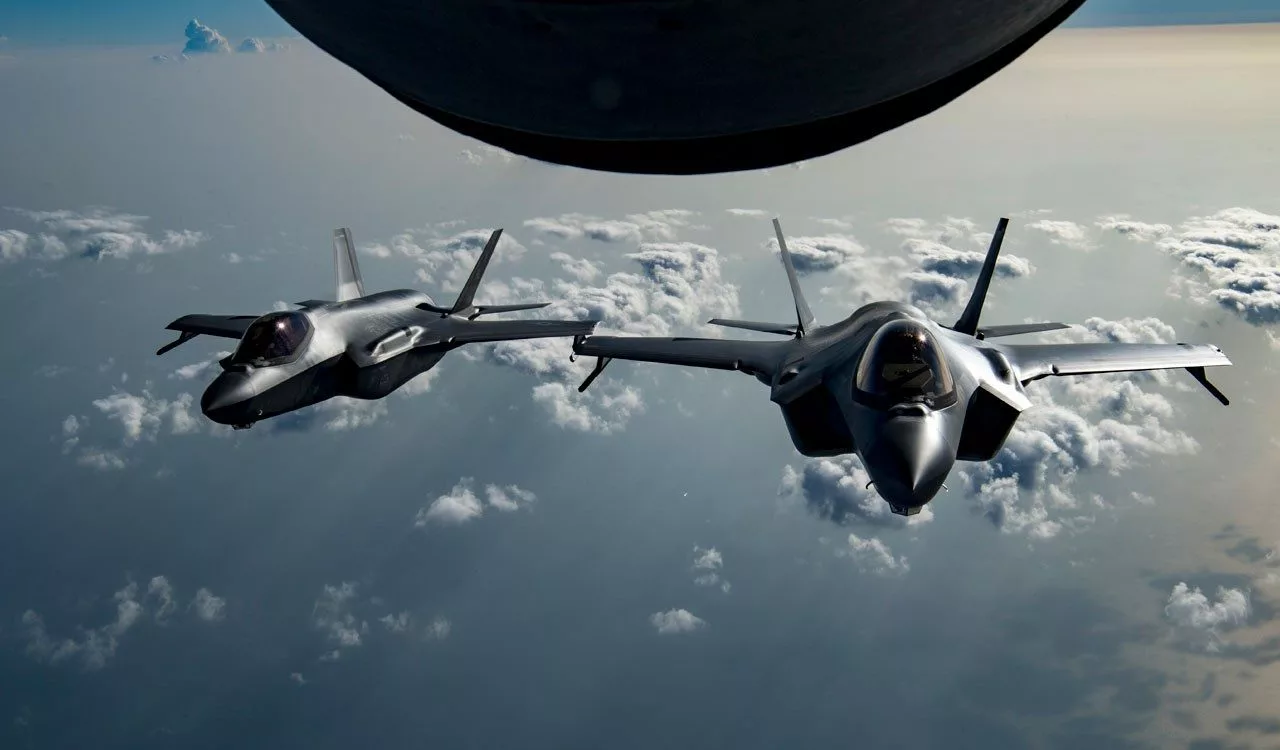In a concerning turn of events, officials have successfully located debris from the missing F-35 Lightning II fighter jet in South Carolina. The F-35, known as the Department of Defense’s most expensive weapon system, vanished on a fateful Sunday near Charleston when the pilot ejected from the aircraft following a “mishap” aboard the plane. Fortunately, the pilot safely parachuted to the ground.
The search for the missing jet involved a collaborative effort between Joint Base Charleston, Marine Corps Air Station Beaufort, and the local community. On Monday evening, debris from the aircraft was discovered approximately two hours northeast of Joint Base Charleston.
In response, the joint base issued a request for the community to avoid the debris area, emphasizing the commencement of recovery operations under the jurisdiction of the US Marine Corps (USMC).
In an official statement, Joint Base Charleston mentioned that the mishap is currently under investigation, refraining from providing additional details to preserve the integrity of the investigative process.
The pilot involved in the incident was promptly transported to a local hospital on the day of the mishap and is reported to be in stable condition. The joint base clarified in a Facebook post that the mishap concerned “an F-35B Lightning II jet from Marine Fighter Attack Training Squadron (VMFAT) 501 with the 2nd Marine Aircraft Wing.”
The incident has raised considerable safety concerns within the US Marine Corps, leading to an official statement issued on Monday. The statement called for a two-day pause in aviation operations to facilitate discussions on aviation safety.
Eric M. Smith, Acting Commandant of the Marine Corps, emphasized the need for this pause, citing three Class-A aviation mishaps within a span of six weeks as the impetus for the safety discussion.
The statement elaborated that during the stand-down period, aviation commanders would engage in discussions with their personnel, focusing on the fundamentals of safe flight operations, ground safety, maintenance, flight procedures, and maintaining combat readiness. This measure is taken to ensure that the service maintains operational standardization of combat-ready aircraft with well-prepared pilots and crews.
This recent F-35 mishap follows a similar incident less than a year ago when an Air Force F-35A crashed in Utah due to turbulence caused by another F-35A. The wake disrupted the aircraft’s flight control computer system, preventing the pilot from regaining control during landing due to low altitude and airspeed.
Additionally, a previous F-35 crash in Japan in 2019 was attributed to human error when the pilot became disoriented. In 2018, a faulty fuel tube in an F-35 fighter jet led to another crash, prompting an inspection of the entire F-35 fleet.
The cost of an F-35 fighter jet, similar to the one involved in this incident, is estimated at approximately $80 million. However, reports indicate varying costs, with a 2020 Project On Government Oversight report suggesting that each Marine Corps F-35B costs roughly $135.8 million.
A 2023 report by the US Government Accountability Office highlights the F-35 Lightning II Joint Strike Fighter program as the Department of Defense’s most expensive weapon system, with an estimated total cost to American taxpayers of approximately $1.7 trillion for the purchase, operation, and maintenance of the aircraft and its systems over its lifetime.
As the investigation into the F-35 mishap unfolds, Joint Base Charleston has not provided an immediate response to inquiries from Gizmodo.
